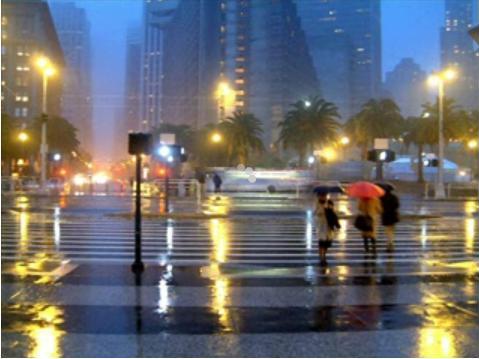By: Rajbir Deswal
You can ill afford to open a photo-album or crave to eat crisp pappads or biscuits in the rainy season. Finding a dry and unstinking towel is unthinkable. The peeling off plaster on the walls makes spooky images appear as if fury of a long season of showers ins’t enough to give nightmares. Irritable creatures not only breed fast during rainy season, they come out in the open slithering, fleeting and flying.img src=”http://www.instablogsimages.com/images/2008/07/23/rain3_NK6wc_16988.jpg” alt=”rain3_NK6wc_16988″/>
While in the urban setting we are mostly jolted out of our thrill and romance of the rains when we experience current flowing through walls and taps in the washrooms, and hitchhiking on the potholed roads; in the countryside we often experienced the aftermath in collapsing kucha roofs and erupting of the boils and acne on the body.
In our Haryanvi parlance we called it Jharee which meant intermittent rains spread over a week during the monsoons. The rural folk did not have any engagements except hookah and card sessions for men, and rolling sewian noodles and singing folk lore for women. Women in Haryana have different set of songs for different seasons like Phagun and Sawan; and different occasions like Sanjhi and Salooman.
If rice had been sown well in time, rains were good feed for the crop but if there were any laggards then they invariably found the showers a Godsend to begin afresh. The first torrent made the watermelons go out of the market and black berry or jamuns substituted them. The farmers’ agriculture sense confirmed that rain-kissed jamuns developed sweet taste overnight. Newer varieties of mango were also on their way then.
Hot and sizzling gul-gulas which were made of sweet-kneaded-floor-rounded-into-bolls and fried in mustard oil; and crisp and sweet suhalis, did enormous good to the palate. Due to excessive rains and resultant unavailability of fodder, the milch animals often did not oblige and there always was dearth of milk. Cows are known to be tormented by thundering in the skies hence no milk for the keeper.
Barsati, in general parlance and Chaubara in typical Haryanvi, were a one-room penthouse—always considered to be romantic structures. They are airy and are located at some height to make you actually feel “on top of the world”. Importance of a Barsati or a Chaubara could be known and felt only during mild showers or torrential rains.
These structures in the country dwellings filled your heart with thrill, awe and enjoyment of its own kind. It is in this setting that most of the lore seeking a longing for the soul mate was composed. Sample this:
Chaubare pe aaj dharoongi, chau-mukh divra baar;
Jaane kaun disa se aawain, mere Raaj Kumar.
(I’ll light up all the four entries to the chaubara with a four-mouthed earthen lamp. I don’t know from what direction my Prince charming may come!)
The walls generally developed cracks and in these crevices kept growing the shoots or creatures. Enough grass would grow on the roofs. If the grass was not cut in time, it could make either the roof leak or give way. Even pucca houses had a growth of grass on their roof tops after rains. Having had a look at such growth of vegetation on his Haveli, renowned Urdu poet Mirza Ghalib had exclaimed rejoicing the rains and making fun of his ‘isolated’ predicament as:
Ug raha hai dar-o-diwar pe subza Gahlib,
Hum biya-baan mein hain, o’ghar pe bahar aayee hai!
And now the last word for various nuances of ‘barsati’. It has connotations of temporariness. There are ‘barsati mendhaks’—opportunist frogs who put up presence only when it suits them. Army too has a slang for ‘Barsati Major’ who will revert back to his rank as Captain, for he was promoted against a vacancy caused against leave of another officer.
RAIN ROMANCE AND WHAT HAVE YOU! URBAN & DESI



